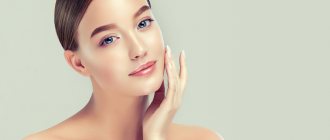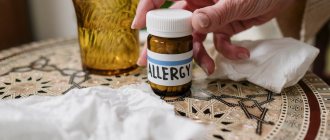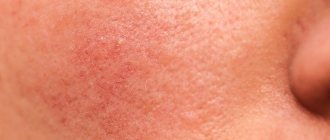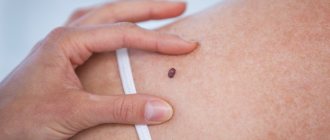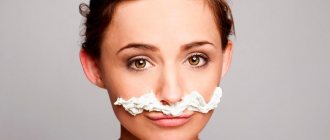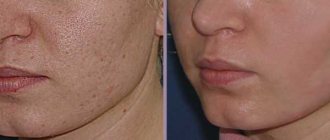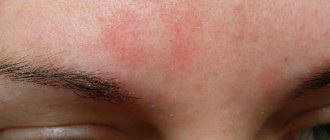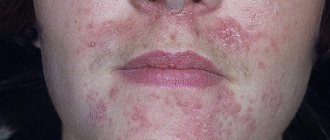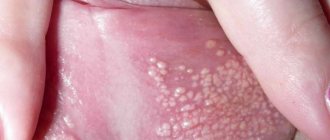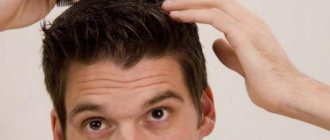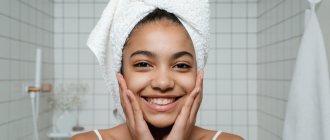Each of us has faced the problem of acne. This is an unpleasant and troublesome phenomenon; it frightens with the unpredictability of its appearance and development. Acne is often treated incorrectly, and the main reason for rash actions is the lack of knowledge in this area. To effectively fight acne, you need to understand the types of acne, know how they differ from each other and understand the severity of the disease. If these parameters are known, then the search for a treatment regimen is simplified.
Disease severity
There are four degrees of severity of the disease.
The first one is the easiest. The mild form is mild and can be seen on the face of a teenager or adult. The first stage is characterized by a small number of blackheads and they look like closed acne or open acne (comedones). As a rule, there is no inflammatory process. However, within the first degree, several pustules are allowed. Treatment can be carried out at home, but it must take place, otherwise the disease will begin to progress. When acne disappears, there are usually no traces left.
The second stage of the disease begins when there are up to 11 different acne . It is manifested by the presence of closed acne, blackheads, redheads and pustules. It happens to both teenagers and mature people, for example, women during their menstrual periods. Self-treatment is acceptable, but if acne has not disappeared within three weeks, then you should go to a dermatologist.
The third degree is a severe form of the disease. It has already spread to the body and has up to 40 acne of different types. You can see the inflammatory process and suppuration. Pimples look larger than in the first two stages. Post-acne appears, which looks like stagnant spots and scars. At the third stage, acne “multiplies” uncontrollably, capturing more and more new territories, so you need to urgently go to the doctor. If this is not done or if you begin to treat it yourself, it can result in ugly scars and blood poisoning.
At the fourth stage of the disease, there is already a whole “army” of pimples on the skin with various shades and sizes. Often several pimples merge together and form cysts and nodules . Dark spots and large scars form on the skin, and the affected areas bleed and fester; at the slightest friction of clothing, breakouts form. As a rule, the back, shoulders, and chest are completely affected. If professional treatment by a dermatologist is not carried out at this stage, then this can be dangerous not only for the beauty of the body, but also for health in general.
It is important to know that acne is a multifaceted disease, its course depends on the individual skin. Therefore, there is no uniform classification system for acne, but some types of acne have been studied, correctly diagnosed and treated by dermatologists.
The most pimply people in the world: interesting facts
Based on the average, acne can reveal a lot about you. For example, an interesting fact is that the most pimply people in the world are, surprisingly, the unemployed. Sometimes it happens that people with acne let everything take its course. But this behavior is fundamentally wrong and leads to a worsening of the general condition of the skin. Despite the fact that acne is a common occurrence, scientists have not yet figured out the exact causes of its occurrence. What is known is that stress aggravates rashes on the face and body.
Types of acne
All acne is divided into two types:
- No inflammatory process.
- With an inflammatory process.
Pimples without signs of inflammation, in turn, are divided into open comedones, which look like blackheads, and closed comedones, which look like whiteheads.
Acne with inflammatory symptoms has the following names:
- Papules,
- Pustules,
- Nodes,
- Cysts.
How to determine whether there is an inflamed acne on the face or not? The appearance of the first one is larger and it catches the eye, disfiguring the face. There are signs of tissue swelling, redness, suppuration , as there is an infection. Inflamed pimples are often painful and uncomfortable. If the acne has no signs of inflammation, then at one moment it can turn into an inflamed one; all you need to do is introduce an infection into the skin pore.
Acne without inflammation
Comedones appear as a result of blockage of the ducts of the sebaceous glands. These pimples contain thick fat, dead cells and epithelial scales.
If such a congestion forms outside the pores, then open comedones appear . Why are they black? Since the pores are open, an oxidation reaction occurs caused by the action of oxygen on lumps of fat. As a rule, blackheads do not cause any trouble, however, if an infection occurs, the situation becomes the opposite.
Closed comedones or whiteheads, wen occur when there is a blockage of fat in the lower part of the pores. They resemble blood clots because they have no way out. They are invisible to the eye and are often felt only by touch. However, some of them are still noticeable, as they rise above the surface. They are called millet grains because they resemble grains.
Closed comedones form on the face in the area of the cheeks, cheekbones, and forehead and are not particularly disturbing - there is no inflammation or pain. However, despite some harmlessness, they are still dangerous, since they are capable of combining with neighboring inflammatory acne under the skin. As a result, a voluminous cavity is formed, which is gradually filled with pus. Thus, the wen can worsen the situation significantly.
Inflammatory acne
Acne with an inflammatory process is also classified. For example, papules are comedones with inflammation, often arising from wen. diameter is up to 1 cm , they look like pink or red balls that rise above the surface of the skin. If you press a little, it temporarily changes color to white. Lacks white head. If the papule has grown from a blackhead, then you can see a dark fat plug. These acne are divided into types:
- Superficial. Their size is up to 5 mm, after disappearing they leave no traces, sometimes a temporary stain forms.
- Deep papules or nodules. They occupy the entire thickness, their diameter is from 1 to 3 cm. They are usually painful, colored red or blue-purple, when they disappear, they leave spots and scars on the skin that disfigure the appearance.
- Cysts. With severe inflammation, dense formations with pus are formed. Often several merge into one, forming a chain of cyst-like papules. If you touch it, you might think that it is a dense capsule. They consist of chambers that are connected by fistulas. They cause a lot of trouble and leave a mark behind.
Traditional methods
The most popular means are:
- Brewer's yeast. To improve metabolic processes in cells.
- Tea tree oil. To combat inflamed skin areas.
- Clay. Clay masks have long been in the arsenal of many girls due to their properties of cleansing and nourishing the skin, as well as to prevent the appearance of rashes and inflammations
Acne on the face: causes and treatment
As a rule, acne appears due to hormonal imbalance. It occurs in adolescence, before the onset of the menstrual cycle, during pregnancy and breastfeeding, and at menopause. Often, hormonal disorders lead to hyperkeratosis, when the sebaceous glands do not work properly. This pathology is characterized by an increase in the upper, stratum corneum layer of the skin. As a result, blockage of the sebaceous glands occurs, which leads to acne.
Open pores are a target for pathogens. Therefore, acne often occurs as a result of skin damage by subcutaneous mites or fungi. The second reason for the appearance of acne is clogged pores , for example, when decorative cosmetics are used. With improper care, acne almost always forms on the face.
The reasons for the formation of acne also lie in lipid metabolism disorders, which are signaled by increased activity of the sebaceous glands. Typically, an imbalance is caused by hot summers, abuse of tanning, both solar and artificial, and baths or saunas. An incorrect lifestyle can also provoke the appearance of acne - these are bad habits, poor nutrition, when you eat fatty, salty, fried or spicy foods.
Other reasons include allergic reactions to the irritant , as well as a lack of vitamins. Acne can occur during a cold, when the body experiences a decrease in immunity, resulting in disruption of the sebaceous glands. But they can also be provoked by internal diseases such as dysbiosis and cholelithiasis. In this case, acne is localized on the forehead. If endocrine or digestive system disorders occur, then the chin is affected. On the nose - you need to get your immune system in order.
How to treat?
Doctors and cosmetologists never tire of repeating that squeezing pimples on your own is contraindicated! As a result of home self-medication, unpleasant consequences arise, which are expressed in the spread of acne to new areas and secondary blood poisoning with the appearance of age spots and scars . Treatment of acne is a complex process, it includes a number of stages:
- Prevention of the appearance of new comedones. Prevention is based on the selection of the necessary care products for problem skin, improvement of the body as a whole, which includes proper nutrition, stimulation of the immune system, as well as monitoring the effect of treatment drugs on the body.
- Removing existing comedones with the help of medications, which include azelaic acid, benzoyl peroxide, tazarotene and others.
- Reducing the amount of sebum using hormones and retinoids. This figure needs to be reduced to 30% or more.
- Exfoliation of the upper layer of the epidermis using peels that contain salicylic or glycolic acid.
- Facial cleansing using gentle ultrasound or other hardware-based, low-traumatic methods. This is an excellent alternative to chemical peels.
- Antibacterial drugs are used for local and internal treatment of inflammatory processes.
- Using various types of dermabrasion, laser resurfacing, cryotherapy, mesotherapy, ozone therapy and other methods, cosmetic removal of the effects of acne is carried out.
- If necessary, parallel treatment of body systems is prescribed - treatment of the digestive system, gynecological, endocrine diseases.
Rashes other than acne
There are diseases accompanied by a rash that looks like acne. However, when acne forms, there are no comedones, and the appearance of rashes is due to other mechanisms. Such diseases are included in the group of acneiform dermatoses . These include perioral dermatitis, rosacea, rosacea, drug rash, skin tuberculosis, small nodular sarcoidosis and other ailments.
Acne-like rashes occur in some people after prolonged exposure to UV rays. This phenomenon is called “sun acne.” The disease becomes more active in the spring and summer. The appearance of sun rashes is completely identical to ordinary acne - these are small, dense papules of a reddish color. Pimples are predominantly located on the forehead, cheeks and chin, as well as exposed parts of the body.
Doctors also classify bodybuilding acne. The appearance of a rash is directly related to the use of steroid hormonal drugs. Their intake increases the secretion of sebum, as a result of which the skin becomes covered with nodular-cystic elements. Characteristic features of the rash: absence of comedones, monomorphism of the rashes and their rapid regression after discontinuation of steroids.
Preventing acne
To prevent the occurrence and recurrence of acne, you must follow a number of the following rules:
- The skin should be cleansed in the mornings and evenings with special mild products, for example, a water-soluble tonic, which will not only cleanse, but also moisturize.
- Makeup must be washed off every evening, especially if it is liquid powder or foundation.
- For washing, use water at a moderately comfortable temperature - barely warm or cool.
- It is necessary to regularly exfoliate dead skin particles with special scrubs or peels. To avoid putting a lot of stress on your skin, choose one product. It is better if it is a chemical peel, it is gentler than a scrub.
- Facial skin needs hydration and antioxidants. To do this, choose household products that are suitable for your facial skin type.
- Locally it is necessary to use antibacterial drugs, for example, based on benzene peroxide.
- You should regularly use sunscreen, this is especially important after procedures to exfoliate dead skin cells.
- It is necessary to regularly change clothes, bed linen, and face towels - this will prevent unnecessary contact of microorganisms with the skin.
So, the main place in preventing the appearance of acne is prevention with proper skin care . But if acne does appear and is spreading, then you should not wait, much less start treating yourself; you should immediately go to a dermatologist to stop the inflammatory process.
Acne on the face
The most pimply people in the world
Teenagers suffer the most from this problem. This is due to the fact that the body at this age undergoes various hormonal changes, which cannot but affect the skin.
But unfortunately, acne is not only for young people. Many adults who are unlucky with heredity or lead an unhealthy lifestyle suffer from acne. Looking at photos of the most pimply people in the world, we don’t even think that there might be celebrities among them. And you don't have to go far. Hollywood stars such as Britney Spears, Katy Perry, Cameron Diaz and Kate Moss, even being quite old, cannot overcome this unpleasant problem.
